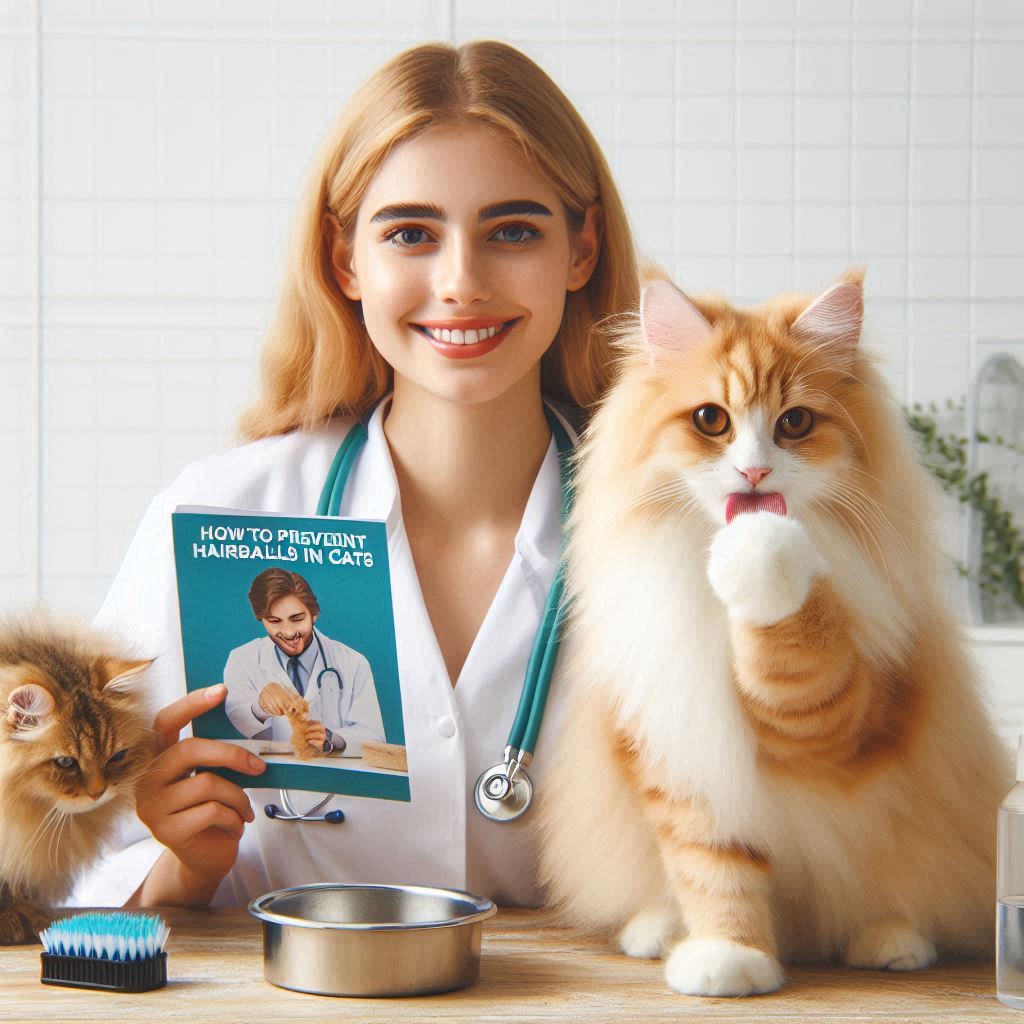
The Cornell Feline Health Center describes a hairball, more formally known as a trichobezoar, as a clump of undigested hair moistened by digestive fluids.
When a cat grooms itself, its rough tongue picks up the loose hairs from its coat, and the cat then swallows them.
Most of the time, the hair passes through the cat’s digestive tract without a problem.
Sometimes, though, the hair piles up in the cat’s stomach and keeps food from passing through. The cat will then vomit it back up.
The hairball will thus often contain partially digested food as well as hair. Since it came back up through the tubular esophagus, the hairball will be tube-shaped rather than round.
Are hairballs dangerous?
Usually, they’re more annoying than anything else. Many cats will regurgitate a hairball once every week or two, and that’s generally considered normal.
According to OxfordPets, however, a hairball can cause a blockage in the cat’s digestive tract – and that can sometimes be fatal.
Such a blockage will be accompanied by the following symptoms:
- Continual vomiting, gagging, or retching that does not produce a hairball
- Constipation
- Diarrhea
- Lack of appetite
- Lethargy
If your cat displays such symptoms, you need to get them to the vet.
Why do cats get hairballs?
According to the Vet West Animals Hospitals website, hairballs are generally caused by either a problem with the cat’s digestive tract and/or an increase in the amount of hair the cat is swallowing.
The latter can be caused by the following:
- Seasonal changes that cause increased shedding
- Increased grooming caused by skin problems
- Increased grooming caused by anxiety or some other behavioral problem
Digestive problems that increase the frequency of hairballs include the following:
- Inflammatory bowel disease
- Abnormal growths like lymphoma
- Motility disorders
What are motility disorders?
The website Wagwalking.com defines a motility disorder or stomach motility disorder as a condition in which the cat’s stomach muscles either contract too quickly or too slowly and thus impair digestion.
Stomach motility disorders have a variety of causes that include injury, kidney failure, stomach ulcers, blockages in the digestive tract, and some medications.
Symptoms of a motility disorder can include weight loss, vomiting, loss of appetite, and eating things that aren’t food.
Since motility disorders have many possible causes, the vet will have to perform a variety of tests to make a diagnosis.
They will generally start with a urinalysis, a blood count, and a biochemical profile.
While treatment will depend on the cause, the vet will often prescribe medication and/or a change in diet. If the cat has a blockage, the vet will perform surgery.
How do you prevent hairballs?
While you can’t prevent hairballs altogether, you can reduce their frequency.
First off, groom your cat regularly, especially if they have long fur. Grooming removes loose hair and thus keeps it out of the cat’s stomach.
Grooming your cat can also help you bond with her. Some cats, however, do not like being brushed. In this case, take the cat to a professional groomer.
Some cats groom themselves too much. Find a way to distract the cat and discourage such compulsive grooming. For example, get a toy that both you and the cat can enjoy.
Get a cat food with a hairball reduction formula that includes a lot of fiber. Such cat foods help hairballs pass through the digestive tract more easily.
Hairball reduction in cat foods also contain formulas that reduce shedding and make the cat’s coat healthier.
Similarly, you can also get give your cat a hairball treatment. These medications are typically mild laxatives that aid the cat’s digestion, so the hairballs will readily pass through the digestive tract.
How do you groom a cat?
The techniques will vary somewhat depending on whether your cat has long or short fur. While grooming the cat, look for any possible health problems.
Black spots in the fur or on the comb could mean your cat has fleas, for example.
Grooming a short-haired cat is fairly straightforward. The website VetBabble recommends starting with a fine-toothed metal comb.
Brush the cat from head to tail. Then use a soft rubber brush or bristle brush to remove loose hair.
When grooming a long-haired cat, start by removing any debris with a wide-toothed comb. If you find any knots or tangles, carefully work them out.
Then use a bristle brush or wire brush to remove loose hair. If your cat is very tolerant and patient, you can finish by brushing around the face with a toothbrush.
Never use scissors to try to cut out a mat, for you will probably cut the cat’s skin. If your cat has a lot of mats or a few big ones, it’s time to call a professional groomer.
The video below shows a professional groomer working on a Persian:

Hi, This is Alexa, and I love cats. This Website is a Complete Journal about how to travel with a cat and other information about Cat Health, Cat Training, Cat Behavior, Cat Foods and more. I hope you find it useful.
